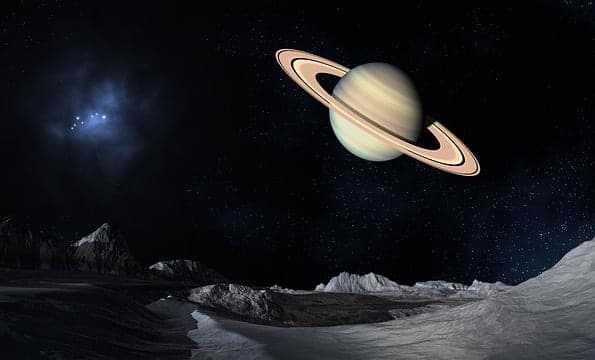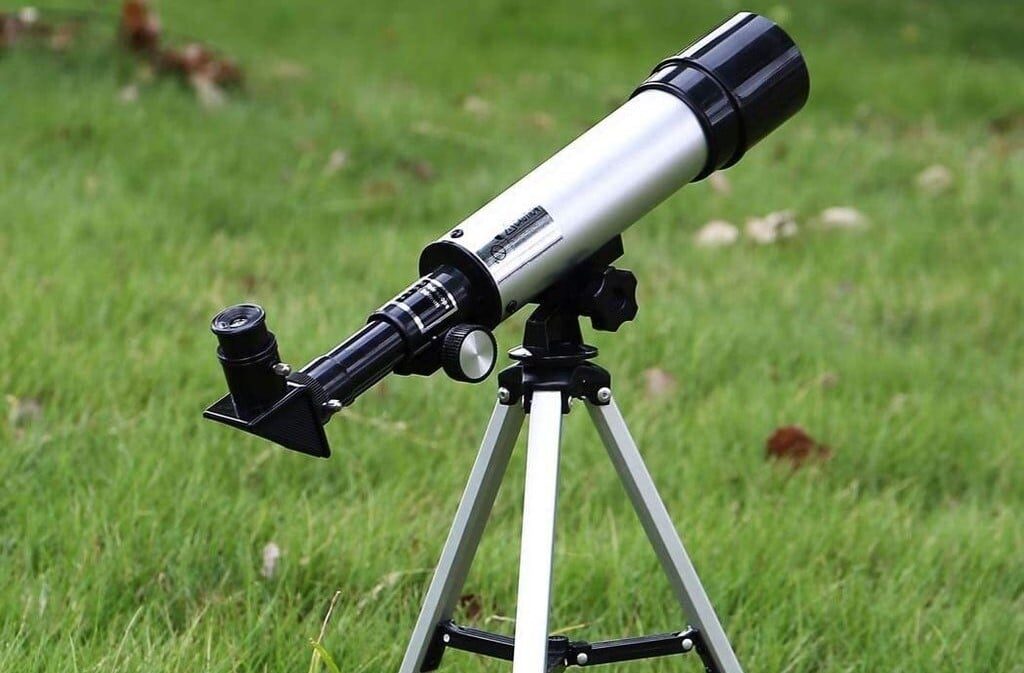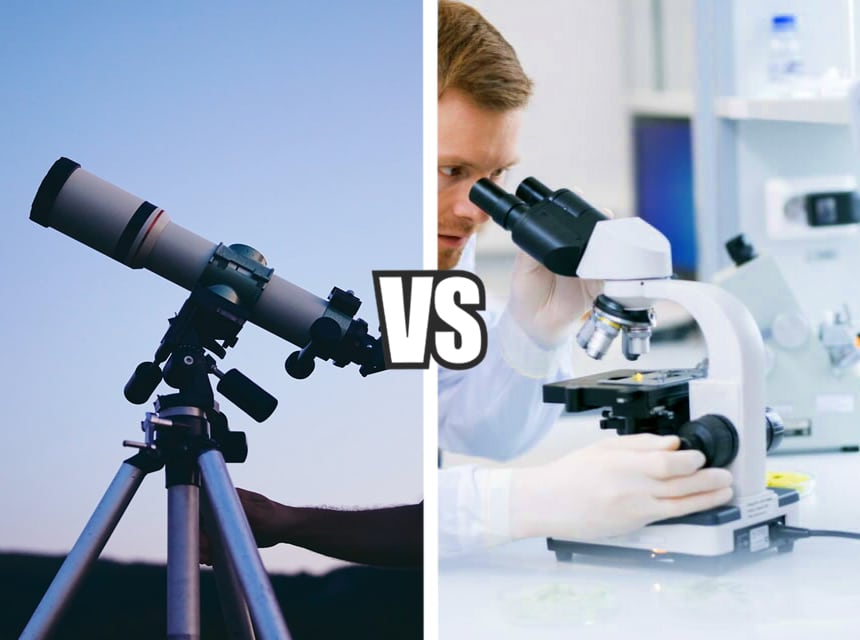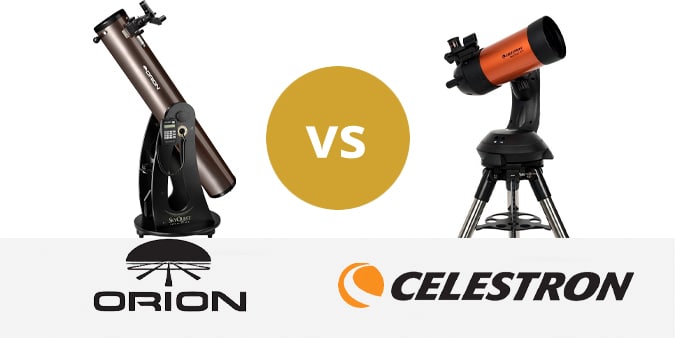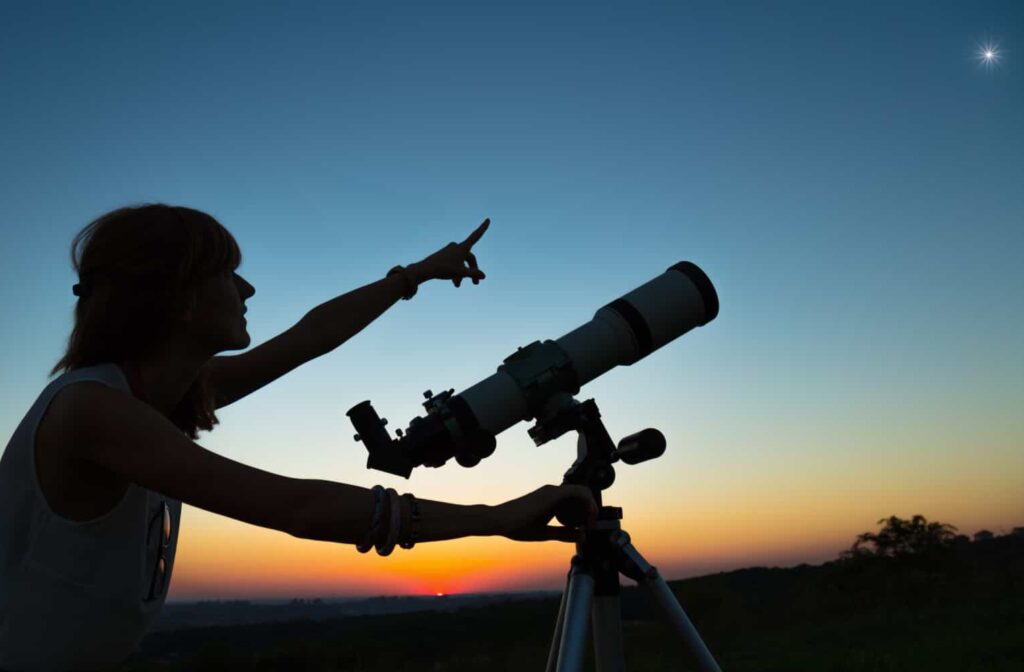

Did your love for the night sky first begin by looking through a telescope? For kids and adults alike, a telescope brings the stars to life. Thankfully, you don’t need to spend a fortune to get a telescope and head outside for a view of the stars. In this guide, we’ll review seven of the best telescopes under $1,000.
Choosing the top-quality telescopes in this price range required considering a lot of factors. We looked at several different types of telescopes, each of which have different advantages and disadvantages. We also took into account aperture and focal length, which impact what you’ll be able to see.
Considerations like the mount, ease of use, and weight were also key to our recommendations. After all, the more comfortable your telescope is, the more likely you are to pull it out on the next clear night.
Other features: liquid crystal display; StarPointer red dot finderscope; StarSense AutoAlign, SkyAlign and SkySync features; free astronomy software programs
If you’re looking for a do-it-all telescope for under $1,000, the NexStar 6SE from Celestron is it. This compound Schmidt-Cassegrain telescope boasts a moderate focal length of f/10, making it perfect both for viewing planets and taking a wider look of the night sky. The magnification is adjustable with the included 25 mm eyepiece from 21x to 354x.
While we’d like to see a slightly larger aperture – it’s just under 6” – the smaller lens does help keep the weight of this telescope down. The whole setup weights just 21 pounds, which makes it one of the lightest and most portable options we looked at. However, because the aperture is so small, you’ll need to limit yourself to looking at relatively well-lit planets and starts.
What really sets this telescope apart is its use of GoTo technology. The built-in computer has a database of more than 40,000 celestial objects and it can keep the alt-az mount moving so that you don’t lose stars and planets from your viewing frame. You can align the telescope on any three bright objects, which speeds up the configuration process. We also like that this telescope comes with a finder scope, which makes it easier to use whether you’re operating it manually or with the computer.
Other features: fully-coated optics, built-in WiFi, SkyAlign technology, adjustable height tripod
The Celestron Astro Fi 90 is one of the best easy to use refractor telescopes that money can buy. You can easily control the 90mm refractor telescope on the free Celestron SkyPortal app on your iPhone, iPad or Android devices. The app replaces the tedious traditional hand control 100%. Once you are connected to the Wi-Fi, all you have to do is hold your device to the sky when you spot something you would like to view and the telescope will automatically slew to it.
Setting it up is such a breeze, thanks to the Sky Align technology. You don’t need any tools, especially with all the accessories the telescope comes with. With the SkyAlign technology, you only have to center three bright objects in the eyepiece then let the telescope calculate its position.
With the Celestron Astro Fi 90 it is no doubt you will have the best quality images, thanks to its fully coated optics. The red dot Starpointer finderscope, two Kellner eyepieces and mirror star diagonal also contribute to the telescope’s overall viewing quality. Best of all, with the innovative Wi-Fi technology you can create a sky tour of all of your favorite celestial objects according to your time and location.
Some of the useful accessories the telescope comes with include an adjustable tripod, an accessory tray, a small dust cup for the focuser, and a large one for the objective lens. The StarPointer finderscope and bracket come preassembled.
Other features: 4-element Plossl 25mm and 10mm 1.25″ eyepieces; Solid rocker-mount with Teflon bearings and tension clutch for altitude
The Sky Watcher telescope is incredible inexpensive for the amount of optical power you receive. This telescope has an aperture of 254 mm, which is roughly 10 inches, so it lets in quite a bit of light. On top of that, it’s capable of producing magnification up to 500x. It comes with two eyepieces, too – one with a 10 mm focal length and one with a 25 mm focal length – so you can easily change the magnification to go from a single planet to the whole Milky Way.
The mount on this telescope is a bit unusual, as it’s designed more for a table than a standard tripod. The rocker-mount is easy to use, but it can feel less stable when you’re trying to track an object through the sky. We wouldn’t recommend this telescope for night photography for that reason, but it performs perfectly well for gazing at the stars. On the plus side, the mount is light – the whole telescope weighs in at just 33 pounds.
The telescope doesn’t have a GoTo computer, but that won’t be a huge issue for most users. Instead, it comes with a right-angle finder scope. It also has a focal ratio of just f/4.72, so your field of view is generally quite wide when using this telescope. Users also appreciated the smooth focusing thanks to the 2” Crayford focuser that comes standard with this telescope model.
Other features: two-speed 2″ 10:1 Crayford focuser; fits Explore Scientific, Vixen, and Meade LXD55/75 mounts
This refractor telescope from Explore Scientific is the classic hobbyist’s telescope. It’s solid across the board, with an aperture of 6” and a magnification of up to 300x with the included eyepiece. The telescope is also fairly lightweight at just 23 pounds, although that doesn’t include the weight of a mount.
The fact that this telescope doesn’t come with a mount can be a good thing. You get to decide whether you want the ease of an alt-az mount or the tracking capabilities of an equatorial mount. You can even upgrade to a GoTo mount system to automate some of your night sky viewing.
The Explore Scientific telescope comes with a few handy accessories, including an 8×50 finder scope and a 2” Crayford focuser ring. Users noted that the telescope’s construction feels extremely solid compared to cheaper refractor telescopes. Just keep in mind that the lens is achromatic rather than apochromatic, so you may experience some chromatic aberration when looking at stars and planets.
The biggest downside to this telescope is that it isn’t easy to transport. Since it’s a refractor model, the telescope has a focal length of nearly 40” and it cannot be collapsed down. Users highly recommended purchasing a case for the telescope to protect it if you plan to travel with it beyond your backyard.
Other features: AudioStar 30,000+ Object-Database; 26mm Super Plössl (1.25″) eyepiece; two Vixen-style dovetail receivers
This compound telescope from Meade is one of the best GoTo telescopes you can buy for less than $1,000. The AudioStar object database has more than 30,000 stars, planets, and other celestial objects. It does an excellent job with object tracking, and you can easily make adjustments to the view manually using the built-in finder scope.
Beginners will particularly like this telescope because it’s built for looking in detail at stars and planets. It boasts a 12” aperture that sucks in light and has a large focal ratio of f/12. Together, these enable you to see quite a bit of detail from planets deep in our solar system. The magnification isn’t all that high – just around 300x with the included 26 mm eyepiece – but thanks to the narrow field of view you can easily take a close look at the moon or a planetary surface. We’d highly recommend pairing this telescope with a Barlow lens to increase the potential magnification.
Users appreciated the alt-az mount on this telescope, which comes with a single arm for easy movement. It’s significantly more stable than a standard tripod design without being overly heavy. In fact, the entire telescope with the mount is under 40 pounds. Despite its size, this telescope is relatively easy to transport to your favorite night sky viewing spot.
Other features: two 1.25 inch Sirius Plossl eyepieces, 6×30 finder scope, 1.25inch rack and pinion focuser, tripod accessory tray
The Orion SpaceProbe 130ST is a great telescope that is well suited to beginners or more intermediate stargazers. While it may not be the cheapest telescope on the market, it does have some excellent features, which will ensure that you don’t quickly outgrow it. The 130ST features a 130mm aperture. At 5.1 inches, this is one of the largest aperture sizes that you’ll find with beginner level telescopes, allowing plenty of light in, so you can observe deep space objects. The ST moniker refers to “short tube”, which is ideal for wide field viewing, making it ideal for looking at nebulae and galaxies. The included kit with the 130ST includes two Sirius Plossl eyepieces. The 25mm provides 26x magnification, while the 10mm provides 65x magnification. However, if you want larger magnification, you may need to add a 6mm to your stargazing kit.
Where the 130ST stands apart from many other beginner telescopes is that it has a “fast” focal ratio for strong performance and you can use magnifications of up to 260x. If you’re using this scope in your backyard, you should be able to enjoy good views of the moon and planets along with bright galaxies, nebulae and star clusters. Even when you consider that the top usable magnification is 70% of the maximum, this still provides 180x.
Other features: 2″ Meade Series 4000 26mm QX Wide Angle Eyepiece; open truss design; 4-Reticle red dot viewfinder
This incredibly high-quality telescope from Meade just squeaked in under our $1,000 cutoff. The reflector telescope boasts a massive 12” aperture, meaning that it can collect more light than nearly any other model we looked at except for Meade’s LX65. Pair that with a focal ratio of f/5, and this telescope is easily the best beginner telescope for looking at far-off galaxies and star clusters.
The telescope is heavy, at nearly 80 pounds. But all that weight comes from a construction that didn’t cut corners. The telescope is mounted on a versatile alt-az base that sits easily on the ground or on an outdoor table. This model comes with a 26 mm eyepiece and four-reticle red dot viewfinder that enables you to home in quickly on a distant object. It also sports a maximum magnification of around 600x, which is pretty impressive.
Don’t let the open truss design fool you – this telescope is large and heavy, with a focal length of more than 1.5 meters (five feet). So, it’s hard to move around. Users noted that it’s much more suited for backyard use than for long-distance transport. The good news is that you can separate the base and optical tube to split the weight in half, so a single person can easily carry the telescope.
Now that you’ve read more about our five favorite telescopes under $1,000, how do you decide which one is right for you? Our Buying Guide will cover everything you need to know about choosing a beginner telescope.
While you might think all budget telescopes under $1,000 are the same, that couldn’t be further from the truth. Even entry-level telescopes are very different from one another, so it’s important to know what you’re getting. To help, we’ll explain the most important features you need to consider when choosing the best telescope under $1,000.
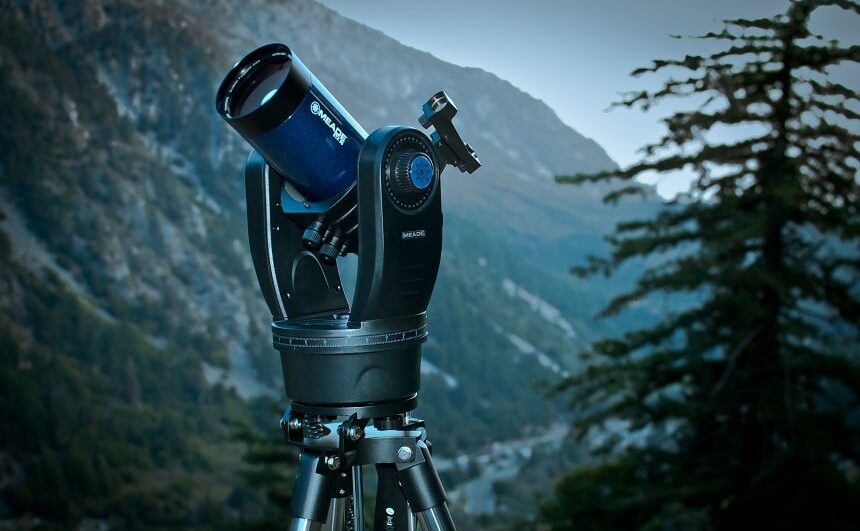
There are three main types of telescopes: refractor telescopes, reflector telescopes, and compound telescopes.
Refractor telescopes like the one from Explore Scientific have a lens at the front of the tube that funnels light into the eyepiece. This is the type of telescope that most hobbyists are familiar with, and it’s also generally the cheapest type of telescope for beginners. Refractors are excellent for looking at the moon and nearby planets, but they can suffer from chromatic aberration that distorts the colors of distant objects.
Reflector telescopes like those from Meade and Sky Watcher are best for looking at distant stars and planets. These have a lens at the back of the telescope, and light is reflected off this lens before it reaches the eyepiece.
Reflectors have large apertures for less money, so they’re excellent at collecting a lot of light. But they require frequent maintenance, which can make them less attractive for hobbyists.
Compound telescopes like the Schmidt-Cassegrain and Maksutov-Cassegrain styles use a combination of lenses and mirrors. They’re even better than reflector telescopes at picking up distant light. However, compound telescopes tend to be more expensive and heavier. The best telescope is the one you use, and heavy compound telescopes don’t lend themselves to frequent use.
The aperture is arguably the most important factor to consider when choosing a telescope. The bigger the aperture, the more light your lens will collect. In general, we recommend choosing a telescope with an aperture of at least 2.8” or 70 mm. Larger is better if you plan to view faraway objects.
However, larger apertures come with several drawbacks. First, they’re expensive. You generally won’t find a lot of reflector or compound telescopes with an aperture greater than 24” for under $1,000. Telescopes with larger apertures are also heavy and take more care to maintain.
The magnification that a telescope is able to produce depends on the difference between the focal length of the objective lens and the focal length of the eyepiece lens. To calculate the magnification, simply divide the objective lens focal length by the eyepiece lens focal length. You can easily change the magnification by changing the eyepiece to one with a different focal length.
Another thing to consider is that as you up the magnification, the image can become fuzzy. The maximum useful magnification depends on the aperture – you can create magnification up to twice the aperture (in millimeters) without creating too much blur.
A Barlow lens is a must-have accessory for your telescope. This lens attaches to your eyepiece and cuts its focal length in half. The net result is that you double your magnification for any eyepiece you attach to your telescope, without having to buy a whole new set of eyepieces.
Unfortunately, most of the budget-friendly telescopes we consider don’t come with a Barlow lens. But you can easily find one after-market for less than $100.
The focal length is the distance between the lens and where light converges to form an image. In practical terms, the focal length matters because it impacts the overall length of your telescope. A longer focal length means that your telescope must have a longer barrel.
The focal length also combines with the objective lens diameter to determine the focal ratio. A focal ratio of f/10 or greater, as on the Celestron and Meade LX65 telescopes, produces a smaller field of view and more magnification for the same eyepiece. These telescopes are ideal for looking at the moon and nearby planets in detail.
Telescopes with a focal ratio of f/7 or less, like the Meade LightBridge and Sky Watcher models, have a wider field of view. They’re best suited for looking at the Milky Way or clusters of stars.
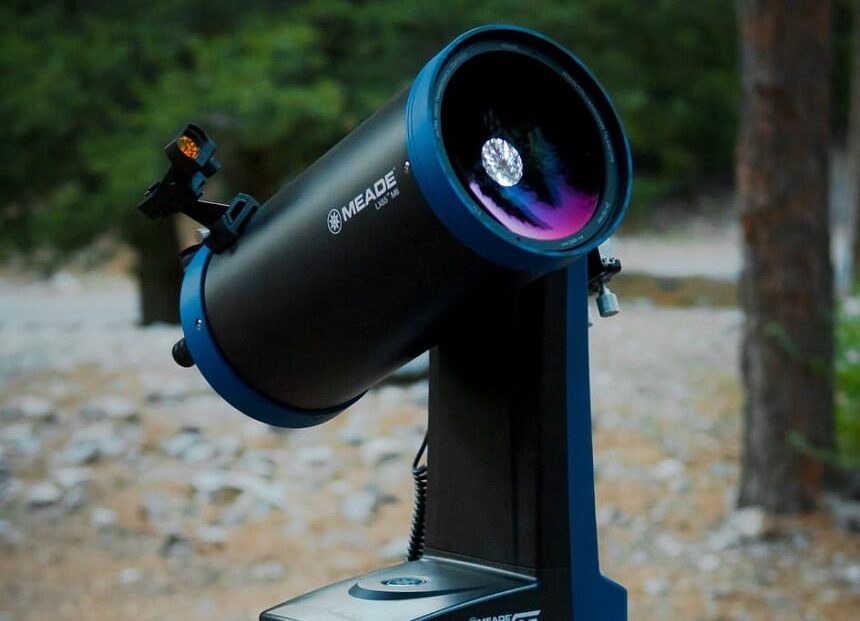
There are two basic types of telescope mounts – alt-az and equatorial. Alt-az (altitude-azimuth) mounts enable you to move your telescope up and down as well as left and right. These mounts are essentially just tripods.
Equatorial mounts work similarly, except that they are aligned to the north pole of rotation of the Earth. That means that once a star is in your viewing frame with an equatorial mount, it will remain in the frame because the telescope is rotating with the Earth. Setting up an equatorial mount can be a daunting task, so this type of mount is less friendly for the occasional trip outside with your telescope.
GoTo telescopes use an equatorial mount with a built-in computer. If you supply the time, date, your location, and the initial coordinates of the telescope’s view, the computer can take it from there. Just input a star, planet, or sky coordinates and the computer will adjust the telescope’s view for you.
The best GoTo telescope can be really fun, especially if you don’t know where objects are located in the night sky. They’re also great for setting up early, before it’s dark enough to see anything, since the computer will have the telescope pointed in the right place for you.
Finder scopes are accessory eyepieces that sit on top of your telescope barrel. They’re designed to offer a wider field of view so you can more easily find the object you’re looking for. When you line up the object in the crosshairs in the finder, it should then be visible in the eyepiece of your telescope.
To get the most out of your finder, it should have an aperture of at least one inch (25 mm).
A telescope only works outside, but you can’t leave it outside permanently, either. You’ll need to haul it outside every time you want to use it. So, weight and portability are extremely important to consider.
Lighter telescopes usually have shorter focal lengths, less magnification, and alt-az mounts rather than equatorial mounts. It’s up to you to find the right compromise between portability and features.
There are plenty of other features you’ll find on beginner telescopes that can make them easier to use. Look for focus assistance or multiple eyepieces, for example.
You’ll also want to take a look at the warranty. Most telescopes don’t have a long warranty since there aren’t many moving or electronic parts, if any. But, before you spend up to $1,000 on a telescope, it’s good to know that you’re protected.
Our three overall favorite telescopes under $1,000 are the Celestron NexStar 6Se, the Meade LightBridge Plus, and the Orion SpaceProbe 130ST.
While the Orion SpaceProbe 130ST may not be the cheapest option on the market, it is a great value telescope that is well suited to beginners who want to look at the planets along with brighter, deep space objects.
The Celestron Astro Fi 90 is our second best choice because of its build quality and wireless capability. It also offers top value for money with its multiple accessories, which offer great convenience and a better experience when exploring the sky.
We think the Celestron NexStar 6SE is the overall best telescope under $1,000 because it thrives under all viewing conditions, offers an excellent GoTo computer system, and is light enough to take with you anywhere.
